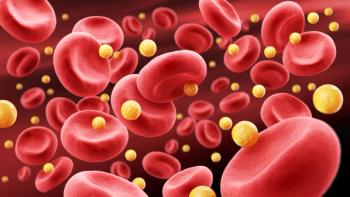
Bariatric Surgery Could Lower Risk of Cardiovascular Disease Caused by LDL Interactions
Harmful LDL functionality contributes to an increase of cardiovascular disease in those with obesity but could decrease within weight loss.
Published in the Journal of Lipid Research, new study results concluded that obesity-induced inflammation causes a harmful low-density lipoprotein (LDL) interaction that can lead to a higher risk of cardiovascular disease (CVD).
LDL is also connected to major risk factors for CVD, but changes in LDL levels have not been reported with obesity or weight loss. Researchers conducted a study to increase knowledge of LDL functionality in obesity, including research that assessed the functionality of a single-donor LDL from plasma in individuals diagnosed with severe obesity, before and after having bariatric surgery.
Obesity has become a growing concern in the United States, as it affects over 40% of adults and the number is increasing. Research has shown that obesity is associated with a greater risk of developing diabetes, certain cancers, hyperlipidemia, hypertension, chronic inflammation, oxidative stress, and CVD. With the increased risk of CVD comes with a higher chance of harm involving elevated triglycerides presented in very low-density lipoproteins (VLDL) and impaired functionally of high-density lipoproteins (HDL).
The press release noted that bariatric surgery is an effective treatment for quick and sustained weight loss, leading to decreased CVD mortality and improved triglycerides and an HDL cholesterol.
The researchers found that LDL functionality is based on non-atherogenic lipoprotein uptake from peripheral cells, through an LDL receptor (LDLR), compared to a pro-atherogenic uptake from arterial macrophages through scavenger receptors.
However, the press release noted that 2 LDL subclasses (LDL (-), and small dense LDL) relate to obesity, type 2 diabetes, and inflammation. Research has found that the LDL subclasses are pro-atherogenic.
“First, their decreased affinity for LDLR prolongs their residence time in the bloodstream, increasing the probability of pro-atherogenic modifications. Second, they penetrate the arterial wall more easily, bind more strongly to arterial proteoglycans, and hence, are retained more readily. Third, they are more prone to fusion, which enhances lipoprotein retention in the arterial wall. Finally, they are more susceptible to oxidation, which drives LDL uptake via scavenger receptors,” said the study authors.
In the study, the researchers included plasma LDL from 6 individuals with obesity from a subset of 13 individuals diagnosed with obesity. The researchers aimed to examine the impact of bariatric surgery on LDL assets that could add to the development of atherosclerosis.
The press release noted that blood samples were taken from the individuals a week before bariatric surgery and 6 to 12 months after. The plasma extracted from the individuals was frozen until use, with the LDL separated from the plasma.
The researchers used previous studies to conclude that LDL functionality directly linked to the risk of developing CVD. However, the press release noted that even though the previous studies did not find a connection in obesity connected with elevated LDL levels, LDL relates to the content of lipids and proteins that are found in obesity.
The current study found that as the functional changes in LDL made them more pro-atherogenic, it contributed to obesity-induced inflammation that was reported to decrease in the following year after bariatric surgery.
“These findings compel us to propose that pro-atherogenic LDL alterations are central to the accelerated CVD development in obesity. Weight loss following bariatric surgery can partially normalize these LDL alterations by reducing the systemic obesity-associated inflammation,” said the study authors.
Reference
LDL binding to cell receptors and extracellular matrix is proatherogenic in obesity but improves after bariatric surgery. Journal Of Lipid Research. News release. Accessed October 5, 2023.
Newsletter
Stay informed on drug updates, treatment guidelines, and pharmacy practice trends—subscribe to Pharmacy Times for weekly clinical insights.


















































































































































































































